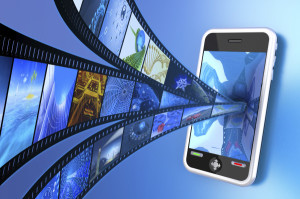 Networking experts are running out of superlatives to describe the coming tidal wave/explosion/cataclysm of mobile data traffic.
Networking experts are running out of superlatives to describe the coming tidal wave/explosion/cataclysm of mobile data traffic.
Cisco yesterday said mobile data is expected to grow by 11 times in the next four years, reaching 18 exabytes per month by 2018. An exabyte is 1 billion gigabytes.
Mobile data traffic is expected to grow by 61% annually into 2018, with the extra traffic from just one year – 2017 – expected to be triple the entire mobile Internet in 2013.
There will be more mobile users, nearly 5 billion by 2018 (up from 4.1 billion in 2013) and more than 10 billion mobile-ready devices, including machine-to-machine connections by then (up from 7 billion in 2013).
Using sophisticated research tools and surveys of a broad array of wireless service providers globally, Cisco also discovered that average global network speeds will almost double from 1.4Mbps in 2013 to 2.5Mbps by 2018. Speeds will be higher in the U.S. where LTE often gives users more than 1Mbps for downloads.
Mobile video will account for 69% of all mobile data by 2018, up from about 53% in 2013.
There will be some wireless network impact by 2018 from wearable devices such as smartwatches and smart glasses, Cisco said. Smartphones, laptops and tablets will comprise about 94% of mobile traffic, while M2M traffic from wearables and other sources such as cars, in-home thermostats and more will comprise 5% by 2018.
Cisco added wearables to its annual study of mobile traffic for the first time this year. In all, there were 21.7 million wearable devices in use globally in 2013, a number expected to reach 176.9 million by 2018, Cisco said.
Most of this wearable device traffic will continue to be channeled through smartphones, using the smartphone as a hub, Thomas Barnett, senior director of industry thought leadership at Cisco, said. The amount going through smartphones is now about 99%, and will drop to 87% by 2018.
While the number of wearables is small today, “their growth rate is faster than the overall M2M category,” Barnett said. Even so, he said the impact from wearables is not yet clear.
“Four years ago, nobody knew the network impact of tablets, but tablet growth was significant,” he added. “I would call wearables a wild card at this point.”
Cisco conducted a test using Google Glass to look at the traffic it generated. Over 16 days, the total data moved wirelessly via cellular or Wi-Fi was 263MB, with 101MB moved from the Google Play, about 29MB from Google Play Music and 28MB from YouTube. MyGlass took 24MB, while Maps took 17MB.
The demands for a device like Google Glass might not be all that dramatic in terms of total data traffic imposed on a wireless network, but there will be general demands on connections from each app or service and how well a network will be able to handle those the demands at once, even to a single user.





